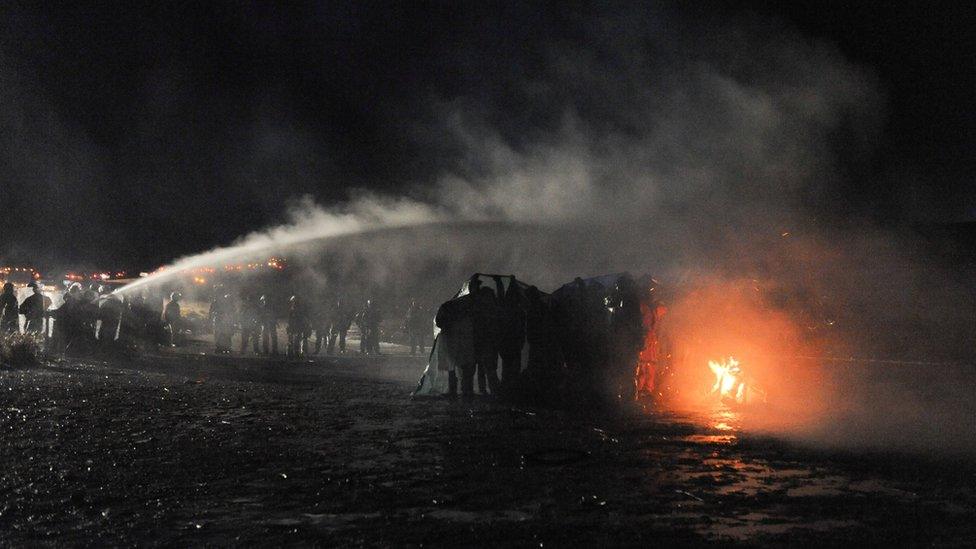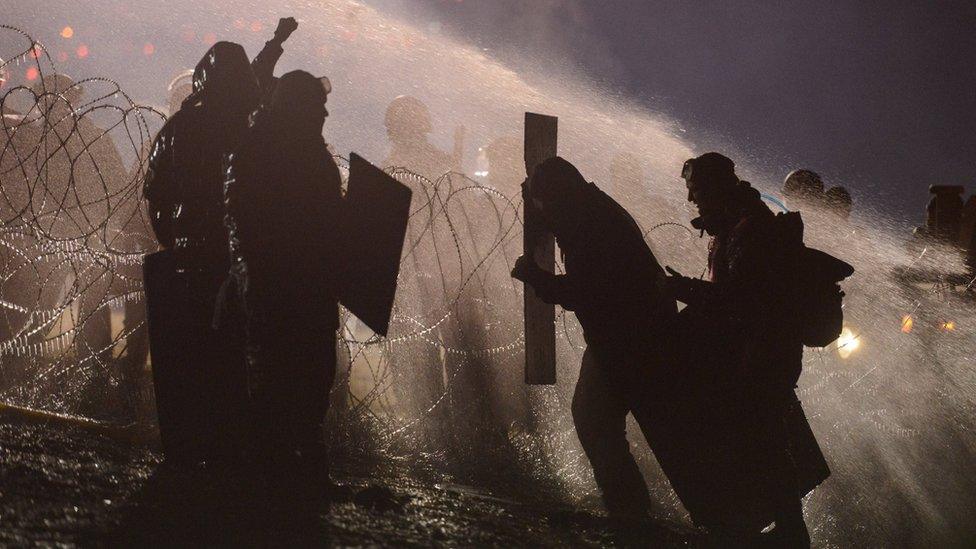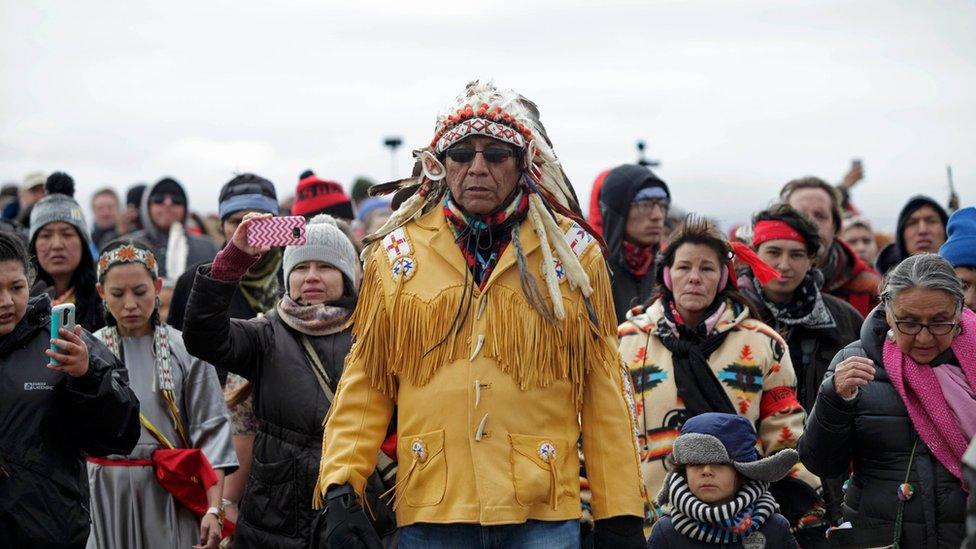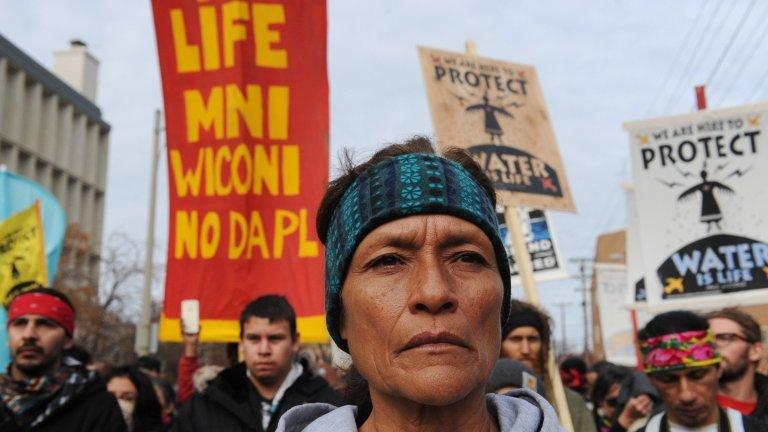North Dakota pipeline: Police fire water cannon at protesters
- Published

Morton County Sheriff's Department posted a picture on Facebook on Sunday evening, showing the latest clash with pipeline protesters.
Police in North Dakota have used water cannon against demonstrators protesting against an oil pipeline.
Morton County Sheriff's Department said protesters, who had gathered on a closed bridge near the Standing Rock reservation, had started fires.
Sioux tribes and allies have been protesting for weeks amid fears the pipeline will pollute water supplies.
Demonstrators said rubber bullets were also fired, but police did not confirm those reports.
One person was arrested.
This latest clash involved an estimated 400 demonstrators at Backwater Bridge, which has been closed by local authorities since late October.
Activists at the scene reported on Twitter that police had used water jets in sub-freezing temperatures, and fired rubber bullets, which injured some in the crowd.

Police fired water cannon during the pipeline protests near Standing Rock Native American Reservation.
Angela Bibens, a representative for the Water Protectors Legal Collective, said, external, "Our legal observers have reported sound cannons, rubber bullets have been deployed, mace and the water cannon."
The sheriff's department wrote in a Facebook post, external that the scene resembled an "ongoing riot".

Protesters tried to shield themselves from the police water cannons.
Hundreds of people have been arrested during weeks of mass protest over the $3.7bn (£3bn) Dakota Access construction project.
The United Nations has previously criticised security forces for using excessive force, external against the protesters.
Earlier in November, the US government announced it had delayed its decision on the future of the pipeline project, and said it will consult further with the Sioux people.
Much of the construction for the 1,172-mile (1,885km) pipeline has already gone ahead.
However, construction company Energy Transfer Partners is still awaiting approval for work under Lake Oahe, which sits beside the Standing Rock reservation.
- Published7 February 2017

- Published15 November 2016
